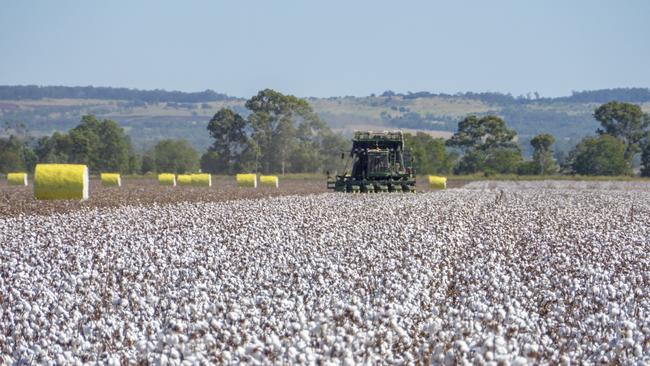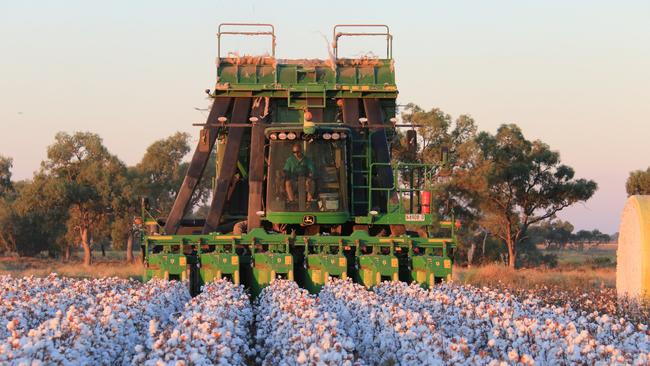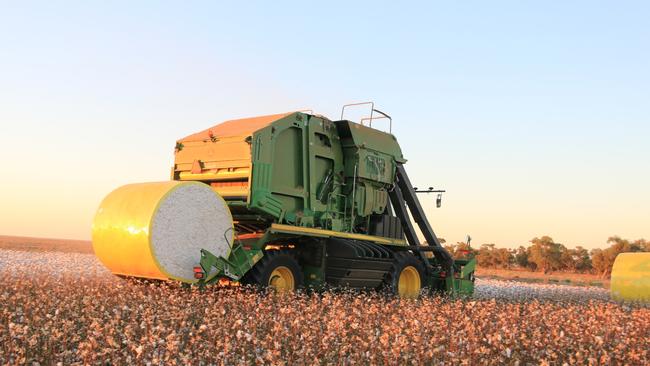Cotton sustainability update shows water use has improved
The cotton industry’s latest sustainability report shows Australian growers have made significant productivity gains, but have work to do to decrease herbicide and pesticide use.

Australian cotton growers have made significant productivity gains, but have more work to do to cut down on herbicide and pesticide use.
Cotton Australia’s annual sustainability update, released last week, shows the five-year average area planted to cotton has increased 19 per cent from 1994 to 2023, while the amount of cotton picked has increased 94 per cent in the same period.
“This highlights the productivity improvements Australian cotton growers have made,” the report states.
The update also found the five-year average irrigated yield of Australian cotton increased from 6.9 bales per hectare in 1993-94 to 10.5 bales/ha in 2022-23.
“The cotton industry recognises it is important yield is not increased at the expense of environmental and social sustainability,” the report said.
Water use efficiency continues to be improved, with about 50 per cent less water used to grow a bale of cotton compared to 1997 in most seasons.
Data collated by Cotton Australia showed growers have reduced their irrigated water use from 6.28 megalitres a hectare in 2021 to 5.66 megalitres/ha in 2022. This is down from 7.76 megalitres/ha in the baseline year of 2018.

Sustainability advisor to Cotton Australia Chris Cosgrove said water was a vitally important input to cotton and any agricultural enterprise, and any improvements in efficiency were positive.
The annual hazard of herbicides to algae (a key indicator species of toxicity) has continued to increase in response to more weeds and changing herbicide use, but over the longer term this hazard has decreased 60 per cent from 2004 to 2023.
Data shows from 2021 to 2022 the five-year average Environmental Toxic Load, a measure of the toxicity of pesticides, for bees decreased 6 per cent, and the five-year average ETL for algae increased 14 per cent.
Mr Cosgrove said the increase in algae is due to more weed pressure, as there has been more rain since the drought broke, and there has been increased use of residual herbicides.
“Residual herbicides have a higher toxicity than knockdown herbicides, but this is part of the industry’s resistance management strategy, in moving away from reliance on RoundUp,” he said.
Going forward the actual impact of the risk of increased residual herbicide use would be looked at.
Meanwhile, for the first time, research showed the impact of widespread misinformation about cotton production may be impacting grower wellbeing.

The Regional Wellbeing Survey found cotton growers were significantly more likely than
any other group to report frequently experiencing loneliness. Whereas 11 per cent of adult Australians and 7 per cent of farmers reported often or always feeling lonely, this increased to 43 per cent among cotton growers.
The report said this could be influenced by a number of factors, including physical isolation
and the younger workforce.
“For the first time, however, the researchers identified social isolation resulting from
low general public acceptance of the cotton industry as a potential driver of loneliness as well.”
The Australian Cotton Sustainability Update provides a summary of the Australian cotton industry’s progress for the 12 months to June 30, 2023.





